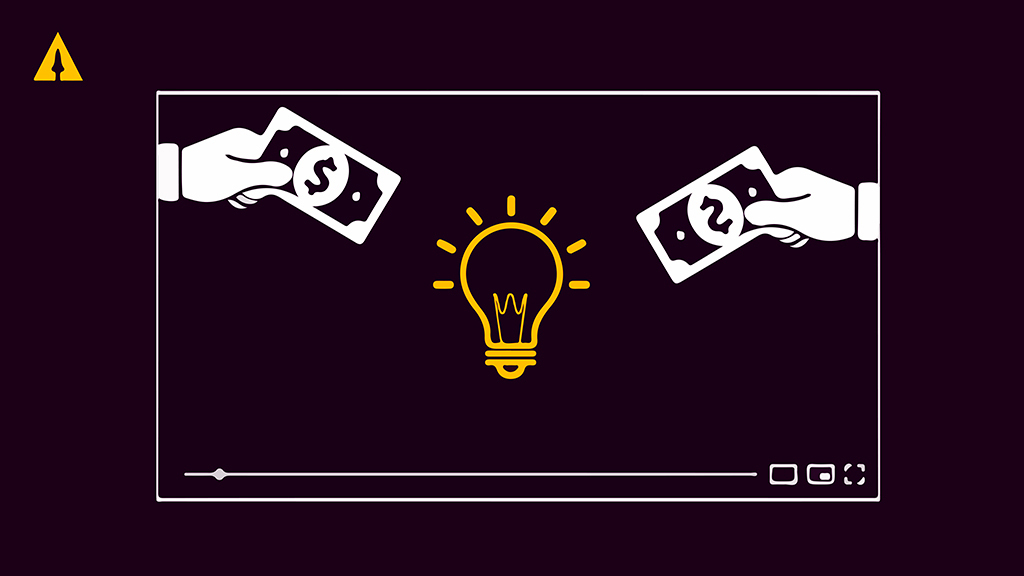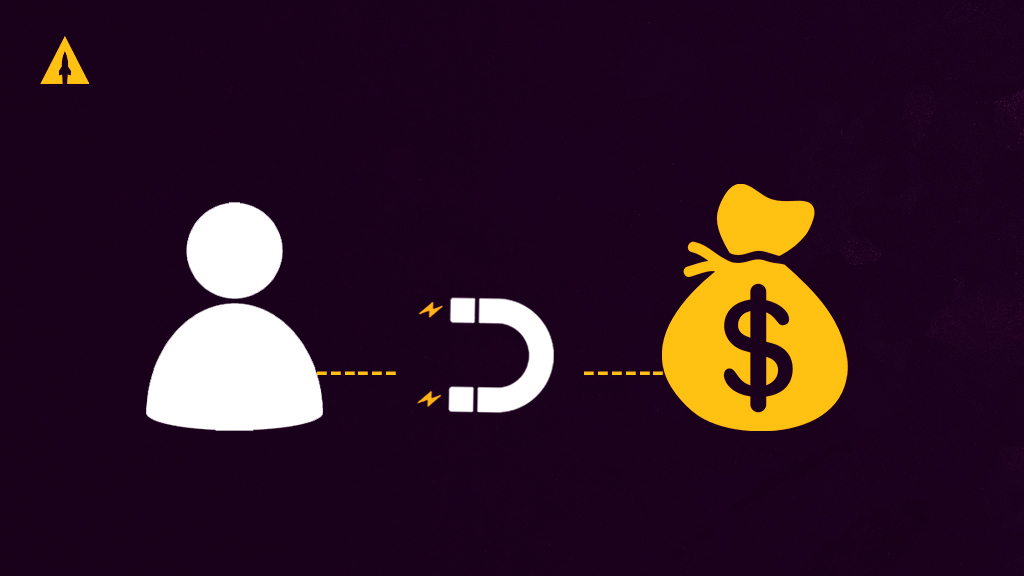Our weekly LaunchBoom Live this Tuesday was a great one! Here’s an overview of what we discussed this week, including a great segment on holiday crowdfunding guidance:

Contents
How to set your goal
One of the most common questions that LaunchBoom gets is how to decide on your crowdfunding goal. In order to answer this, we first need to take a step back and think about your campaign’s goals and your overall strategy. There are two main strategies that we see with crowdfunding: a funding strategy and a marketing strategy.
Your strategy
A funding strategy is used in a campaign that has very little cash on hand and is just trying to use the crowdfunding campaign to raise the money to produce their product once. The goal for these is generally under $10,000, and is focused more on survival than on eventually scaling the product. You’ll want to figure out your budget and see what your break-even price is and then set your funding goal right around that amount. That way, making your goal means you’ll be able to finish your project without losing any money.
A marketing strategy, on the other hand, is for a campaign that’s looking to raise six or seven figures and has the budget to do that. You’ll have to advertise, build your community, create an amazing campaign page and video, and more. If you have the money for that, then you’ll set an internal goal and an external goal. Your external goal is the one posted on your campaign page, and this number will look a lot like a funding strategy goal. Your internal goal, however, is the amount you’d like to raise, which will only be shared with your team.
The goal of a marketing strategy is to set your goal to something low that you know you can blow it out of the water. You can then leverage that success into more success.
So how do you figure out what that external goal should be?
Setting your goal
Start by looking at your email list. Let’s say that you have 10,000 subscribers. Generally, an email list will convert at around 2% in the first 48 hours, so 200 of those people will purchase your product. If you have an average order value of $150, then you can expect to raise around $30,000 in the first 48 hours. If that will cover your expenses, then you can set your goal there (or even a little lower if you want to show a higher percentage raised)!
You should also check your reservation funnel to make sure that those numbers support your external funding goal. The VIPs in your reservation funnel will convert at a 30-40% rate, so make sure you double-check to see that you have enough VIPs to help you cross that line.
When you should launch
What is the best month, best day, and best time to launch?
When we look at data from Kickkstarter and Indiegogo, we find that the absolute worst month to launch is December. People are generally looking to purchase something that they can get right away for the holidays. Fewer campaigns launch in December because of this, and the ones that launch don’t tend to do as well, since fewer people are backing campaigns during this time.
On the flip side, the month that sees the most people backing campaigns is May. That makes May look like the best month to launch!
So now that we’ve narrowed the month down, we need to figure out what day of the week is best. We can again look at metrics from the platforms to figure this out. The worst days to launch are the weekends; there’s too much other stuff going on, so if you launch then, you’ll just get buried in the noise. The best day to launch, and the day that sees the most backers, is a Tuesday.
So, a Tuesday in May… but what time of day? Again, from the metrics, we see that most people back between 8 AM and 12 PM Eastern time.
So that settles it, right? Any Tuesday morning in May must be the best time!
Not so fast.
The best time for you
One thing that you really need to keep in mind is seasonality. If you have a product that’s geared for use during a certain season, you should launch it during that season. For example, if you’re launching a winter jacket, it’s best to do that in the colder months, but if you’re launching a grilling tool, you’ll do better with that during the summer, when more people are grilling. Even if your product won’t be delivered before the season is over, you should launch it when the product will see the most use.
The most important thing to consider, though, is this: are you ready to reach your funding goal? Have you done all the pre-campaign work to build your community, your email list, and your VIP group? Are you confident that you’ll hit your goal within 48 hours of your launch?
That’s the real test of whether or not you should launch. Even if everything else seems perfect timing-wise, you should not launch if you aren’t 100% confident that you’re going to reach your goal.
The bottom line is this: Launch when you’re ready. Launch when it’s seasonal. Launch on a Tuesday morning. And, hey, if everything else works out, go ahead and launch in May.
LaunchBoom Academy
What would you say if I told you that we have a proven system for launching ecommerce products, raising millions, and scaling your brand… and we’re giving you a free training on how to do it?
It’s what we do here at LaunchBoom. And we’re going to share the framework for how we do it with you in an upcoming training given by Joe Piperni, our growth specialist.
The basic framework is this: test, launch, scale.
Joe will dive into each step in detail in the training. The short explanation is that during the testing phase, you’ll be collecting emails and reservations, building your community, and seeing if there’s a market for your product. You won’t launch until you’re confident that you’ll meet your goal. Once your campaign is over, you’ll scale it, turning your product into a business that can grow. You can then start the whole process over with a new product, adding to your company and turning your backers into loyal repeat customers.
On the training, Joe also goes through the five biggest product launch mistakes that he sees people make over and over again and how to avoid them. He’ll also tell you about LaunchBoom Academy, which is a way for you to get access to every single secret of the LaunchBoom system at a fraction of the cost of our full agency services.
Ready to watch the training? Click here to sign up now!
Holiday crowdfunding guidance
The biggest question I’m hearing right now is: Should I launch my campaign heading into the holiday season?
There are pros and cons to launching now, just like there are pros and cons to waiting. The first thing to ask yourself is whether or not you’re ready to hit your goal. Like we said above, if you’re not ready, you need to wait. There really isn’t an exception to this rule.
A big consideration for quarter 4 launches is that people tend to be shopping for holiday gifts, and they want something physical that they can hand over. They’re less interested in backing a project that will ship later in the year; they want something in their hands now. That’s why we recommend against launching in the month of December. If you have something that you can deliver by Christmas, it could be worth launching it in November, especially if you give a “delivery by Christmas” guarantee. Don’t just say that to get backers, though—you’ll lose your entire community if you lie about being able to deliver on that promise.
Remember that advertising during the holiday season will be far more expensive than other times of the year. When a lot of people are trying to advertise at the same time, the price of that real estate goes up. In times like these, it’s important to focus on other ways to get in front of your audience. Think about getting influencers to talk about your product or doing organic social media posts. Use the email list you already have to put secret perks and flash sale deals in front of your community. Spend your time and energy getting the people who already know who you are to purchase instead of trying to get more people to know who you are!
Q&A and giveaway
This week, we held a giveaway in our Crowdfunded Community on Facebook! Everyone who watched LaunchBoom Live got a set of directions on how to enter, and the winner will get a free one-hour coaching session with Joe. During this call, Joe will review whatever the winner wants–it could be content, the funnel, or the product itself! We’ll be choosing a winner this afternoon, so check out the Crowdfunded Community to see if it’s you!
If you want to know how to enter future giveaways, make sure to watch LaunchBoom Live. We’ll let you know how to enter to win!
Here’s the question I’m going to answer in our recap this week: I don’t have a prototype yet, but I do have a render. Can I start my campaign with that?
The answer is: it depends! Indiegogo will sometimes let you launch a campaign with a rendering, while Kickstarter requires you to have a prototype to launch. We recommend that you have a prototype before you launch, no matter what platform you’ll be on.
The place where 3D rendering really shines is in your pre-campaign testing phase. You can use a rendering in your advertising for your email list and reservation funnel. If your rendering and messaging drive people to your email list and VIP group, then you know that it’s worth investing in a full prototype and going ahead with your launch. If your rendering doesn’t perform well, then you can take a step back and make adjustments before going to launch. This can save you a ton of money in the long run, which is why the testing phase is so important.
Want help with your holiday planning or your funding goal, or want to talk to our specialists about your product launch? Apply to work with us today!



